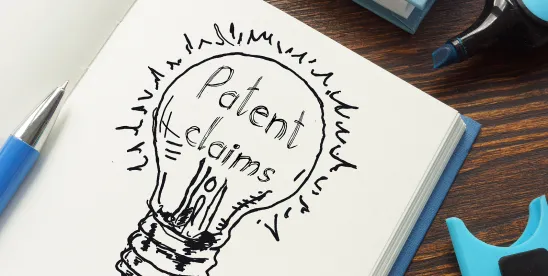Highlights
Federal appeals court held that under the America Invents Act, the sale of a product outside the grace period invalidates a patent on the product’s manufacturing process
The Federal Circuit followed the Supreme Court’s decision in Helsinn Healthcare v. Teva Pharmaceuticals, which reached the same results for patents on products
Before engaging in commercial activity, companies should ideally file a patent application covering the invention or, at a minimum, carefully document the date of the earliest activity that could be deemed commercial
In Celanese Int’l Corp. v. Int’l Trade Comm’n, the U.S. Court of Appeals for the Federal Circuit affirmed a finding by the International Trade Commission (ITC) that certain claims of three Celanese patents were invalid because Celanese sold products made using the patented process more than one year before filing patent applications. Although it had long been settled law under the 1952 Patent Act that such sales would invalidate a corresponding process patent, Celanese argued that Congress had changed the law when it passed the America Invents Act (AIA) in 2011. The Federal Circuit disagreed.
Background
Celanese alleged that Anhui Jinhe Industrial Co., Ltd., Jinhe USA LLC, and other entities were infringing three of its patents covering a process for making Ace-K, an artificial sweetener. All three patents had an effective filing date of Sept. 21, 2016. It was undisputed that Ace-K was made in Europe using a secret process and that Ace-K was sold in the United States before Sept. 21, 2015, more than a year before the effective filing date of the patents.
Notably, Celanese did not contest that these undisputed facts made the patents invalid under pre-AIA law.
Celanese’s argument that the AIA changed prior law on the on-sale bar ran headlong into the U.S. Supreme Court’s decision in Helsinn Healthcare S.A. v. Teva Pharms. USA, Inc. In Helsinn, the patent at issue covered the actual product (a drug), not the process by which it was made, but that turned out to be a distinction that did not make a difference. Celanese made some of the same arguments that Helsinn had made, and while those arguments had found some traction in the district court in Helsinn, they were rejected by both the Federal Circuit and the Supreme Court (9-0).
Three of Celanese’s main arguments were:
1. Celanese relied on certain textual changes to § 102 in the AIA, specifically 1) the use of the phrase “claimed invention,” which replaced “invention” used in the pre-AIA version, and 2) the addition of the catchall phrase “or otherwise available to the public.” As to “claimed invention,” the Federal Circuit held that “[c]onsistent with existing judicial construction” the use of “claimed invention” was nothing “more than a clerical refinement of terminology for the same meaning in substance.” With respect to the “otherwise available to the public” language, the Federal Circuit noted that Helsinn had made the same argument and “the Supreme Court explicitly rejected it.”
2. Celanese argued that certain other provisions of the AIA showed that Congress had altered the scope of the on-sale bar. The Federal Circuit, however, disagreed and also found the provisions were not relevant.
3. Celanese attempted to rely on portions of the legislative history of the AIA, in particular, a colloquy between two senators discussing the bill’s impact on the on-sale bar. However, the Federal Circuit found that the views of individual legislators (even a bill’s sponsor) were not dispositive and that, again, the Supreme Court had rejected the same argument in Helsinn.
Key Takeaways
Because selling a product outside the one-year statutory grace period invalidates any patent on the product or the process by which it is made, inventors and their companies should ideally file a patent application before engaging in any commercial activity. Alternatively, they should carefully document the date of the earliest activity that could be deemed commercial to ensure an application is filed within one year from that date.




 />i
/>i
